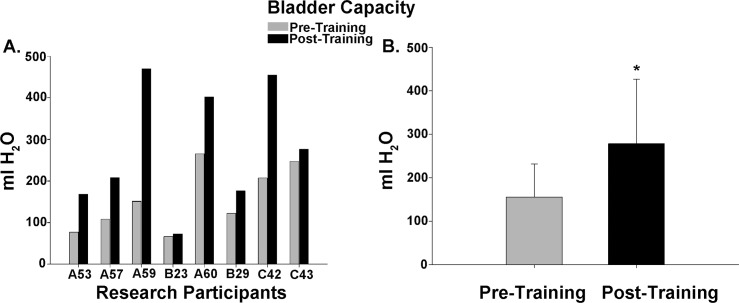Fig 3. Bladder capacity data summary.
Bladder filling ceased and capacity measured (leak + residual volumes) with the occurrence of either spontaneous urine leakage (n = 5; reflex void), autonomic dysreflexia (n = 2; Participants A60 and C42) or a voluntary void following a strong urge (AIS D Participant C43). (A) A comparison of pre- and post-training bladder capacity values in each of the eight participants. A binomial proportion test indicates that a significant majority of the research participants demonstrated an improvement in bladder capacity (vs. random occurrence, p < .05). Note that research participant B23 had a suprapubic catheter and thus, the increase in capacity was incremental. (B) Bladder capacity increased significantly post-training (p = .02, 155.4 ± 76.1 vs 278.5 ± 147.8 ml).

